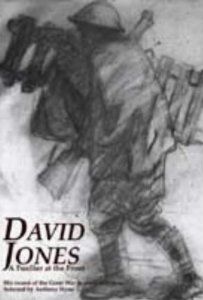A record of the Great War in the words of the painter-poet illustrated with eighty-one black-and-white drawings from his notebooks.
From Wikipedia:
"Although he had been trying to write about his wartime experiences since 1928, it was not until 1937 that Jones published his first literary effort. In Parenthesis, which was published by Faber and Faber with an introduction (in 1961) by T. S. Eliot, is a mixture of verse and prose-lines but the rich language establishes it as poetry, which is what Jones himself considered it. Jones's literary debut won praise from critics and from fellow-poets such as Eliot and W.B. Yeats, as well as garnering the Hawthornden Prize in the following year. Jones's style can be described as High Modernism; the poem draws on literary influences from the 6th-century Welsh epic Y Gododdin to Thomas Malory's Morte d'Arthur to the poetry of Gerard Manley Hopkins and Anabase by St. John Perse (translated by Eliot) to try to make sense of the carnage he witnessed in the trenches. An extract from In Parenthesis read by Jones himself in 1967 appears on the audiobook CD Artists Rifles.
With the outbreak of the First World War, Jones enlisted with the Royal Welch Fusiliers and served on the Western Front from 1915 to 1918 with the 38th (Welsh) Division. He served longer at the front than any other British war writer. His experiences in the trenches were to prove important in his later painting and poetry, especially his involvement in the fight at Mametz Wood."
